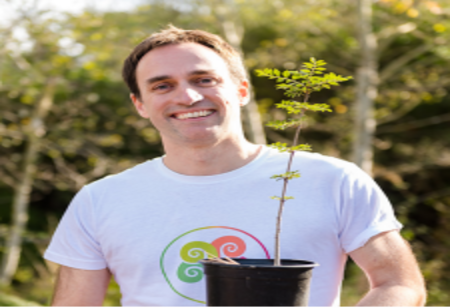
Viruses We have Never Encountered before may be Released from Ice


Before founding Tree-Nation in 2006, Maxime was involved in several European start-ups related to the world of the Internet. Born in France, he studied Business, Engineering and Interior Architecture.
Climate change is the most probable cause of COVID-19 and is likely to provoke future outbreaks and pandemics.
In recent months COVID-19 has quickly replaced climate change as the most immediate threat to humanity on the media agenda. However, researches point out that these seemingly independent threats are inextricably linked. Investigations into the origins of the virus, have placed bats as being the probable source, with the virus being passed to pangolins as an intermediate host before being transmitted to humans (Zhou et al., 2020). But many have overlooked the underlying factor for the rapid spread of this virus: climate change. Knowing we cannot fix our mistakes now, it is important to look ahead and prepare ourselves against future outbreaks.
The interaction between viruses and climate change
The evidence is building to support the claim that climate change will result in increased numbers and intensity of pandemics. This can occur as a result of a number of factors such as the melting of permafrost, the extension of species ranges through warming, and improved survival of viruses over winter months. We must also consider the effects of some indirect factors. For example, climate change will ultimately make some areas of the world unliveable, thus more people will be crowded into smaller spaces, enabling higher rates of transmission of viruses from one person to another. Other human activities such as exploitation of the natural environment, in particular deforestation, urbanisation and increased global travel also contribute to the increase in global pandemics such as the COVID-19 (Madhav et al., 2018).
A way to reduce the spread of viruses transmitted by animals would be to halt the human infringement on the habitat of wild animals which is so commonplace in todays world
Viruses for which we have never developed any immunity may be released from permafrost
Climate change has reached the stage where permafrost, frozen ground typically widespread in the Arctic, sub-Arctic and Antarctica, has started to melt. The concern is that buried deep in the permafrost are ancient viruses, stuck in the ice for millennials, for which we never developed any immunity. One study found 30,000 year old viruses in the permafrost which retained their infectivity (Legendre et al., 2015). This study proves there is a possibility that viruses such as the Black Death, smallpox, anthrax or the Spanish Influenza, which are thought to be trapped in the permafrost, could be viable. Once the permafrost has melted, these viruses would be released. The effects of these are unimaginable, aggravated further by the increased risk of viruses’ transmission between wild animals and humans that climate change entails.
Climate change, and specifically deforestation, causes the reduction of the habitat for animals and increases their crowding. Animals are therefore forced into areas inhabited by humans, increasing the overall risk of viruses’ transmission between animal species and to humans. It is also proved that climate change alters the extension of the range of disease-bearing mosquitoes. As global temperatures increase with climate change, mosquitoes will be able to survive in areas previously uninhabitable for them, and transmit viruses such as the Zika virus, yellow fever, Dengue virus and chikungunya virus. (Kraemer et al., 2019).
Solutions and mitigation
A way to reduce the spread of viruses transmitted by animals would be to halt the human infringement on the habitat of wild animals, which is so commonplace in today’s world. Deforestation and habitat loss and fragmentation leaves many wild animals no option but to live among or close-by to humans, where there is increased risk of transmitting an infectious disease. By protecting their habitats, we limit our own exposure to these diseases (Morse et al., 2012). Furthermore, the illegal trade of species, such as the pangolin, also increases the risk of transmitting these diseases across the world. So ending such trade should also be a priority.
Climate change mitigation will also help to prevent the spread of viruses through preventing the extension of certain species ranges e.g. mosquito and the melting of permafrost. Climate change solutions include transitioning from fossil fuels to renewable energy resources, engaging in reforestation and afforestation and working to reduce carbon emissions by making changes to our own lifestyles.